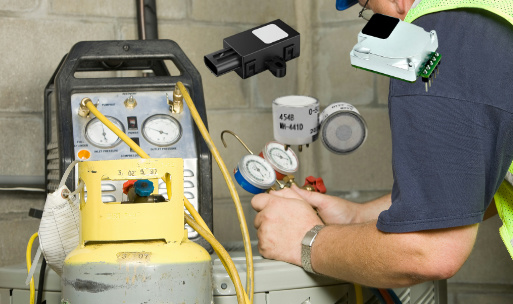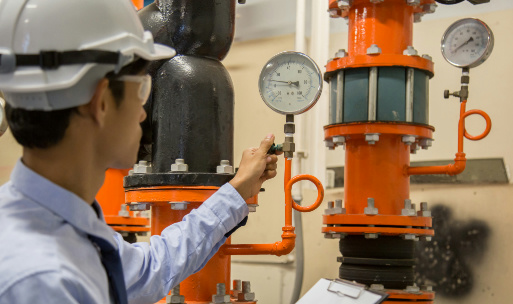Using Ceramic Pressure Sensors in Electric Vehicle ABS Systems
In electric vehicles (EVs), safety and efficiency are paramount. One of the critical components contributing to these aspects is the Anti-lock Braking System (ABS). ABS systems are designed to prevent wheels from locking during sudden braking, providing better control and stopping power. At the heart of the ABS system is the pressure sensor, specifically ceramic pressure sensors, which play a vital role in monitoring and regulating the braking pressure in EVs.
The Role of ABS in Electric Vehicles
ABS is a safety system that prevents the wheels of a vehicle from locking up during braking. This is crucial because locked wheels can cause a loss of traction, resulting in skidding, especially on slippery or uneven surfaces. In electric vehicles, where regenerative braking is common, ABS plays a unique role by working in tandem with the electric motor’s braking system to optimize both safety and energy efficiency.
In traditional internal combustion engine (ICE) vehicles, ABS systems work by adjusting the hydraulic brake pressure in response to data from various sensors. However, in electric vehicles, ABS systems must adapt to a different set of requirements due to the integration of regenerative braking, which adds a layer of complexity to how braking pressure.
For the ABS system to work effectively, accurate and fast pressure measurements are necessary. This is where ceramic pressure sensors come into play. These sensors measure the brake fluid pressure and provide real-time data to the ABS control unit, enabling it to adjust the pressure instantly and ensure optimal braking performance.
How Ceramic Pressure Sensors Work in ABS Systems
Ceramic pressure sensors are typically used to measure the hydraulic pressure within the brake lines. The sensor is composed of a ceramic diaphragm that deforms under pressure. This deformation changes the electrical resistance of the sensor, allowing it to measure the pressure applied to the brake fluid with high precision.
In an electric vehicle ABS system, the ceramic pressure sensor is integrated into the hydraulic brake lines. When the driver applies the brakes, the sensor monitors the pressure of the brake fluid. If the ABS system detects that a wheel is about to lock up, it adjusts the pressure by modulating the brake fluid's flow, based on the real-time data provided by the sensor. This rapid adjustment prevents wheel lock-up, maintaining traction and control.
Winsen Ceramic Pressure Sensors in Electric Vehicle ABS Systems
Advantages of Ceramic Pressure Sensors in EV ABS Systems
Ceramic pressure sensors are becoming increasingly popular in electric vehicle ABS systems due to their unique properties. Below are several reasons why ceramic pressure sensors are well-suited for this application:
1. High Accuracy and Sensitivity
Ceramic pressure sensors offer high accuracy and sensitivity, making them ideal for ABS systems where precise pressure measurements are critical. These sensors can detect even the slightest changes in brake fluid pressure, allowing the ABS system to respond more quickly and effectively to prevent wheel lock-up.
2. Resistance to Harsh Conditions
Ceramic sensors are highly resistant to harsh environmental conditions, such as temperature fluctuations, moisture, and corrosion. In electric vehicles, ABS systems are exposed to extreme conditions, including high temperatures generated by both regenerative braking and traditional friction brakes. Ceramic pressure sensors can withstand these conditions without compromising performance, ensuring reliable braking in all situations.
3. Long-Term Stability and Durability
One of the standout features of ceramic pressure sensors is their long-term stability. They maintain their calibration and accuracy over time, even after extended use in demanding conditions. This durability is particularly important in electric vehicles, where the ABS system is frequently engaged, especially in stop-and-go urban driving or during aggressive regenerative braking.
4. Compact and Lightweight Design
Electric vehicles require components that are lightweight and compact to maximize energy efficiency. Ceramic pressure sensors fit this requirement perfectly. Their small size and lightweight design allow for easy integration into the ABS system without adding unnecessary bulk or weight to the vehicle.
5. Cost-Effectiveness
While ceramic pressure sensors offer advanced performance characteristics, they are also cost-effective. Their manufacturing process is relatively simple, which helps keep costs down. This makes them an attractive option for electric vehicle manufacturers looking to implement high-performance ABS systems without significantly increasing production costs.
The Future of Ceramic Pressure Sensors in EV ABS Systems
As electric vehicles continue to evolve, the role of ceramic pressure sensors in ABS systems is likely to expand. With advancements in sensor technology, we can expect even greater accuracy, faster response times, and improved durability in future ABS systems.
In addition, the integration of smart sensors and advanced driver-assistance systems (ADAS) in electric vehicles will further enhance the role of ceramic pressure sensors. These sensors will be able to provide more data to the vehicle's control systems, allowing for more sophisticated braking strategies that take into account factors such as road conditions, vehicle speed, and driver behavior.
Conclusion
Ceramic pressure sensors are a crucial component of ABS systems in electric vehicles, offering high accuracy, durability, and resistance to harsh conditions. Their role in monitoring and regulating brake pressure is essential for preventing wheel lock-up, ensuring safety, and optimizing performance. As electric vehicles continue to grow in popularity, the demand for advanced pressure sensors like ceramic pressure sensors will only increase, making them a key player in the future of automotive safety and efficiency.







